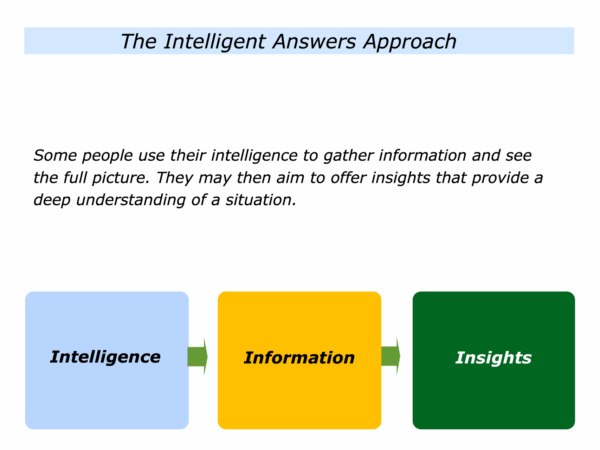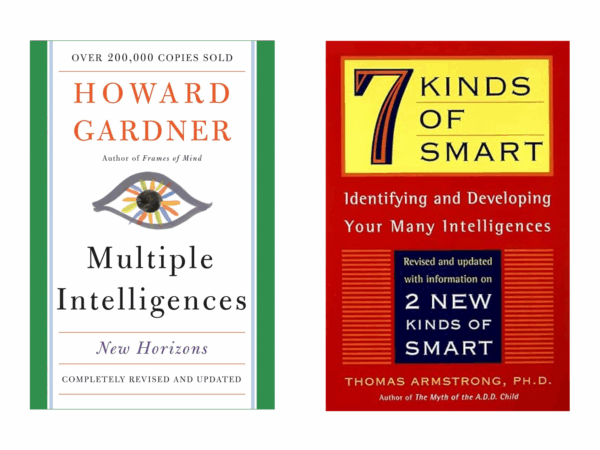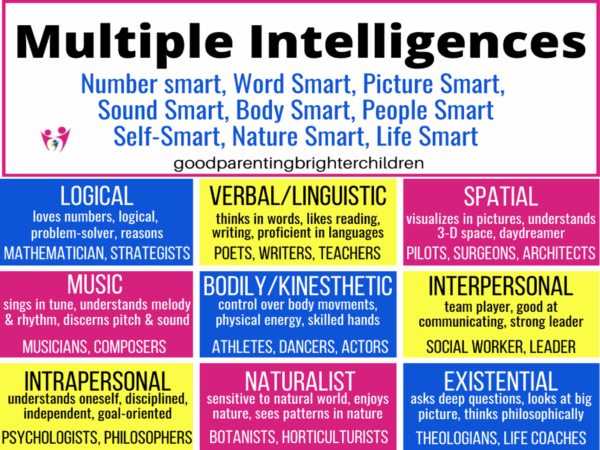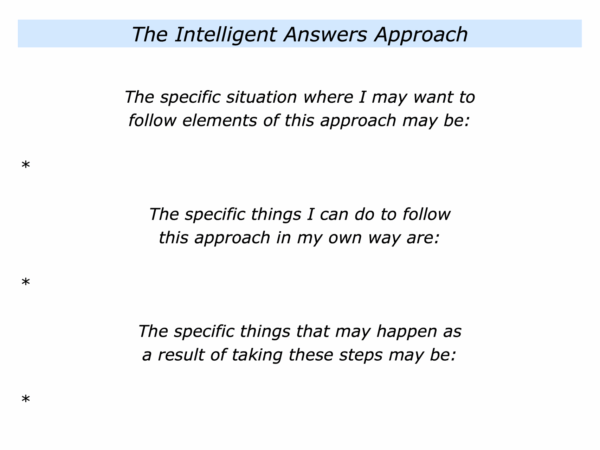
Some people aim to give intelligent answers in a culture that asks for instant answers. They gather information and see the full picture. They may then offer insights that provide a deep understanding of a situation.
There are some situations where it may be important to find an instant answer. But some people may give knee-jerk instant answers that are based on cliches or a refusal to see the complexity of a situation.
Some experts may instead focus on the following themes when aiming provide insight about the situation.
Intelligence
They will use their intelligence to make sense of what is happening. As we know, however, there are many different kinds of intelligence. A person can be brilliant in one area of life but have blind spots in others.
A cerebral person may be good at making considered decisions in some situations but find it challenging to manage certain emotions.
A creative person may do superb work when pursuing certain activities but find it difficult to find solutions in other areas.
A caring person may be good at helping other people but sometimes find it hard to take care of themselves.
A commercial person may be brilliant at making money in their field but have difficulty in managing other kinds of situations.
A person who is highly sensitive, dyslexic or has ADHD may apply their abilities superbly in some areas but not in others.
Howard Gardner’s book Multiple Intelligences described how different people are intelligent in different ways. These included logical, verbal, spatial, interpersonal and other intelligences.
Thomas Armstrong’s book Seven Kinds of Smart translated these into Smarts. These included Logic Smart, Picture Smart, Music Smart, People Smart, Body Smart, Self Smart, Nature Smart and Life Smart.
Many people have built on these ideas. Some have changed the titles for the various intelligences and added others. One key point to remember, however, is that different people may have different combinations of the intelligences.
Below is an illustration from the goodparentingbrighterchildren website Whilst focusing on young people, many adults also have some of these intelligences. The illustration also describes some of the professions that people with different intelligences may go into.


Different people use their intelligences in different ways in the situations where they excel. Some begin by focusing on the following theme.
Information
Good decision makers, for example, often start by gathering information and aim to see the whole picture. They take the following approach.
They aim to see what is actually happening in the situation – such as how people are behaving or the specific events that are occuring.
They aim to look for any patterns – plus the consequences of these patterns – and any connections between the events.
They aim to clarify the specific results to achieve in the situation and how it may be possible to achieve these goals.
Different people take these steps in different ways. Al Siebert, who wrote The Survivor Personality and The Resiliency Advantage, described what he learned studying people who found ways to survive traumatic events.

Such people sometimes demonstrate the characteristics shown by peak performers in certain fields. They are constantly scanning to see what is happening in the areas where they excel. They often focus on the following themes.
Radar
They have good radar in the activity where they excel. They see patterns quickly and seem to know what will happen before it happens. Such radar often springs from a natural talent, but it increases as people develop.
Repertoire
They have a wide repertoire of tools – knowledge, strategies and skills – in the activity where they excel. They continue to add to their repertoire as they gather more experience and wisdom.
Results
They use their radar to gather information. They then reach into their repertoire and select the appropriate strategy to work towards the desired results.
Great workers take similar steps to clarify what may be happening in a situation. They take time to let the ideas incubate and aim to make sense of the information. This can then lead to the next stage.
Insights
Some people aim to gain insight – a deep understanding of events – for their own benefit. Some also aim to communicate these insights in a way that can help other people.
Some experts take the following steps to offer insights and pass on knowledge to people. They aim:
To communicate the specific things that are happening in a situation and to bring these to life with specific examples;
To communicate the possible ways forward in the situation together with the pluses and minuses of each option;
To, if asked, communicate their recommendations for tackling the situation and achieving the desired results.
Different people pass on the insights in different ways. Some may prepare properly by exploring the following questions.
Who are the people – the target audience – that I am going to meet? What is happening in their world? What are the challenges they face? What are the goals they want to achieve?
What are the kind of insights – the kinds of knowledge – that they are interested in? How can these insights help them to achieve their goals? How open-minded may they be to receiving this knowledge?
How can I prepare the ground properly if I am going to give information that goes against some of people’s present views? How can I say something like, for example, “The data shows …” rather than get into arguments?
How can I pass on the knowledge in a way that people can use? How can I bring this to life with examples that resonate with people? How, if asked, can I pass on any recommendations in way that people can apply to achieve their goals?
Good advisors aim to give intelligent answers rather than knee-jerk instant answers. They gather information and see the full picture. They may then offer insights that provide a deep understanding of a situation.
Let’s return to your own life and work. Looking ahead, can you think of a situation where you may want to follow elements of this approach? How can you do this in your own way?
If you wish, try tackling the exercise on this theme. This invites you to complete the following sentences.



Leave a Reply